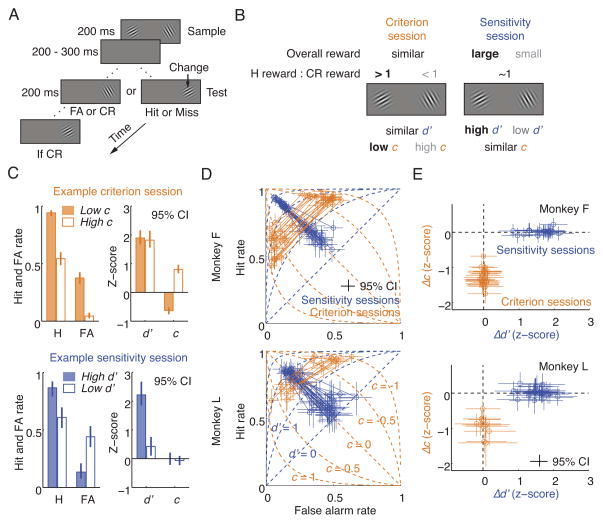Figure 2. Dissociation task.
(A) Monkeys detected a target (orientation change) that occurred on either the first or the second test stimulus. Behavioral responses to the first test stimulus were categorized as hits (H), misses (M), correct rejections (CR), or false alarms (FA). (B) Reward manipulations to isolate spatially selective changes in criterion (c) and sensitivity (d′). (C) A criterion session of monkey F and a sensitivity session of monkey L. (D) All sessions. Each circle is the behavior in one task condition from one daily session, and a solid line connects the two conditions of each session. Dashed lines are isocriterion and isosensitivity lines. (E) Differences in criterion and sensitivity between the two task conditions of each session. Same data as panel D. (C–E) Error bars represent 95% confidence intervals. (D–E) Monkey F: 22 criterion and 22 sensitivity sessions. Monkey L: 10 criterion and 25 sensitivity sessions.

